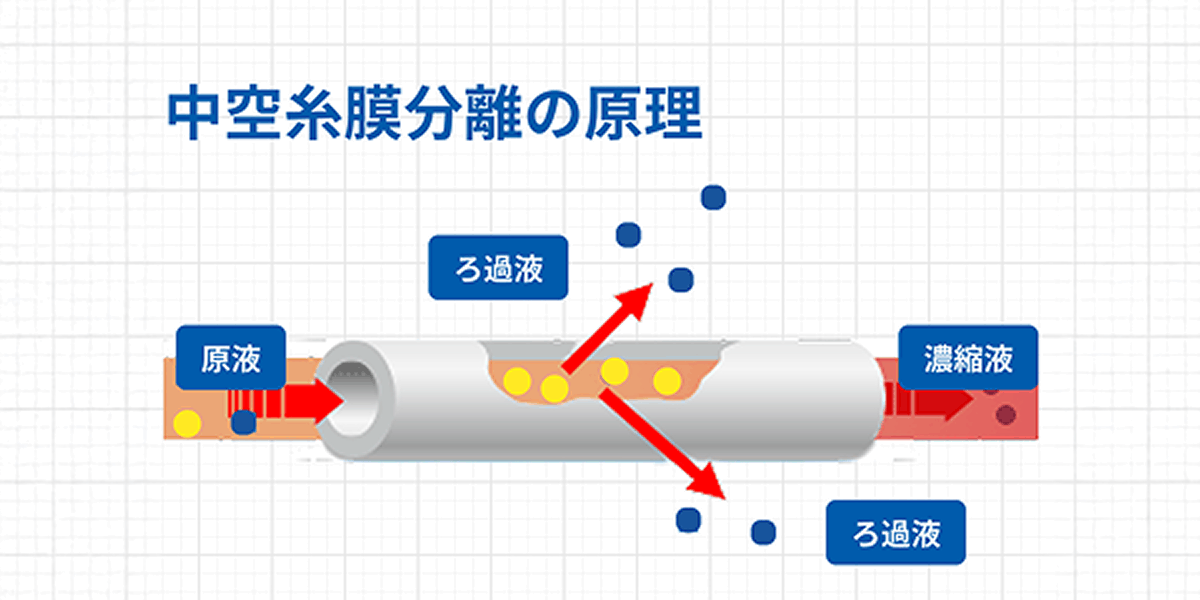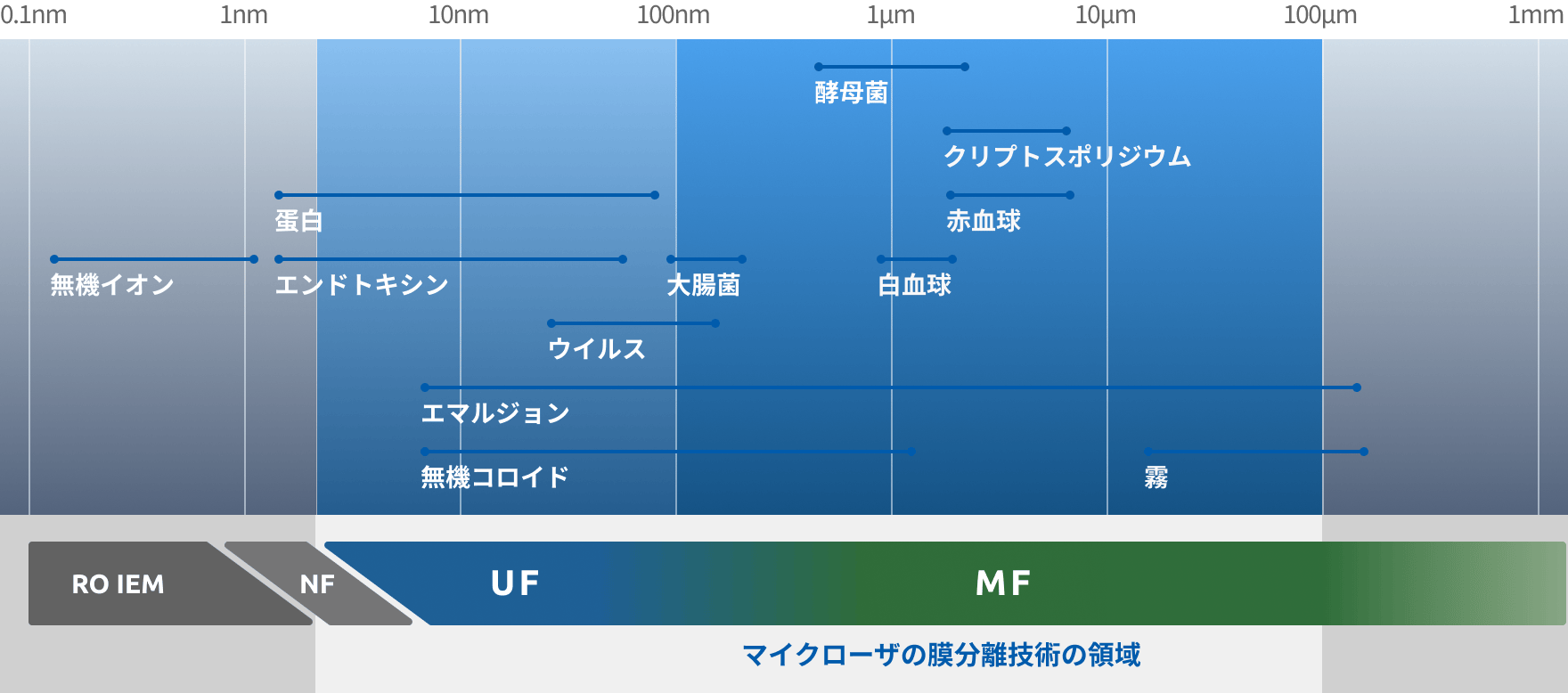What Is Membrane Filtration
Membrane filtration is a separation process that uses pores between continuous structures. Depending on the size of the target substance and the driving force for filtration, it is classified into MF (microfiltration) membranes, UF (ultrafiltration) membranes, ion exchange membranes, and RO (reverse osmosis) membranes.
Membranes and Target Substances for Separation
The following diagram shows the target substances separated by membranes, the membranes, and the scope of Microza® membrane separation technology. 1 µm means 1/1000 mm, and 1 nm means 1/1,000,000 mm.
Check Out the High-Performance Hollow Fiber Membrane Lineup Now
Asahi Kasei's hollow fiber membrane Microza® for filtration and separation offers a diverse product lineup to suit various applications. We provide products that meet a wide range of filtration needs, including high-precision MF (microfiltration) and UF (ultrafiltration) membrane modules.




